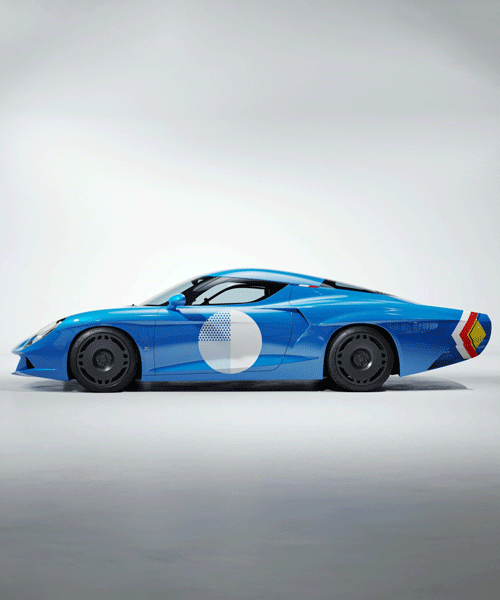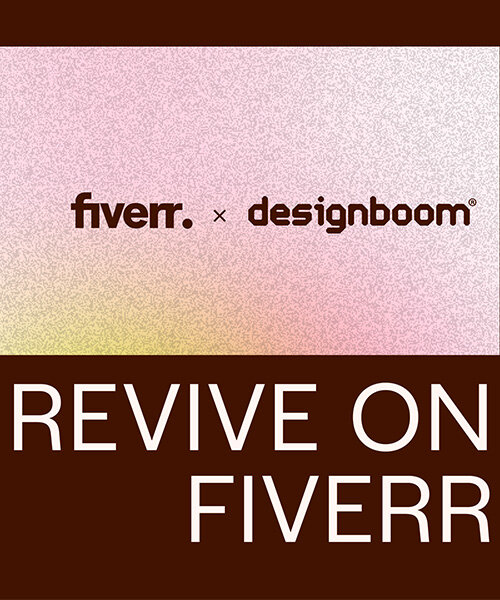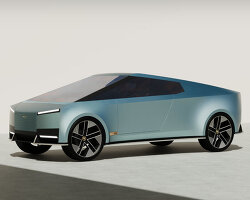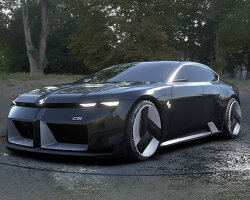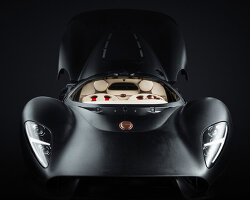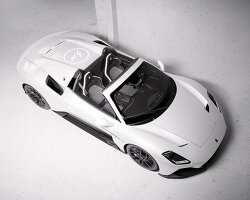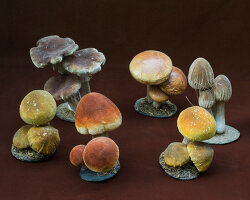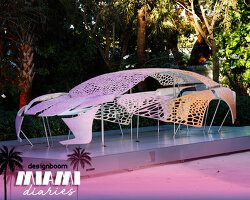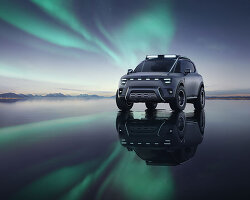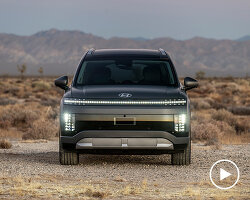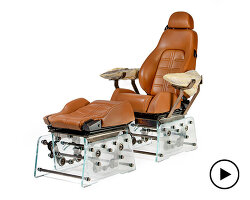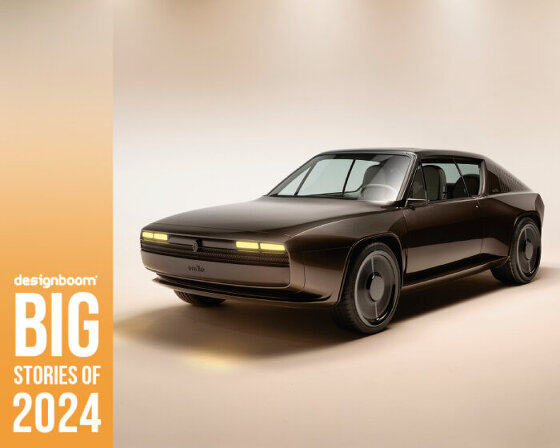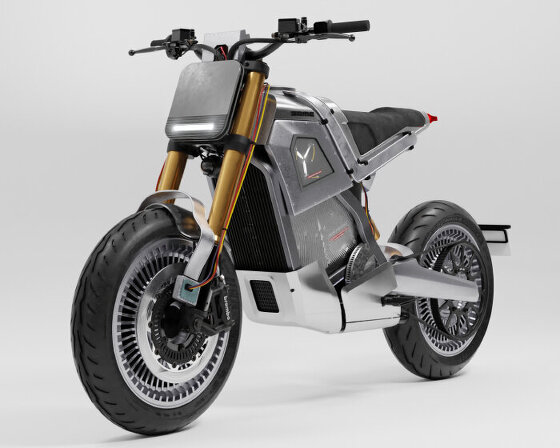a legacy of iconic coachbuilding
For over a century, Zagato Atelier has been synonymous with the art of coachbuilding, crafting some of the world’s most coveted collectible cars. Established in 1919 by Ugo Zagato, the company quickly distinguished itself by merging principles of aeronautics with coachbuilding (the design and manufacture of horse-drawn carriage bodywork), and soon automotive design. This fusion ultimately informed its unique aesthetic language. Unlike mass-market manufacturers, Zagato has always focused exclusively on custom-made, limited-edition vehicles that have become prized collectibles. Today, the brand is led by third-generation Andrea Zagato, alongside his wife, Marella Rivolta Zagato, granddaughter of Renzo Rivolta, founder of ISO Rivolta.
As the atelier expands its reach, the upcoming launch of new offices in the United States and the United Kingdom marks a significant milestone. Andrea Zagato explains in the following interview with designboom, ‘We are not an automotive maker; we are a coachbuilder. Our cars are items for collectors, rather than consumables.’ The decision to open up more spaces reflects a desire to engage directly with collectors, offering new gateways into the history and artistry behind each Zagato creation. Marella Rivolta Zagato adds, ‘We sell works of art, unique pieces… Our cars are made of design, of ideas, of passion, and of a story.’
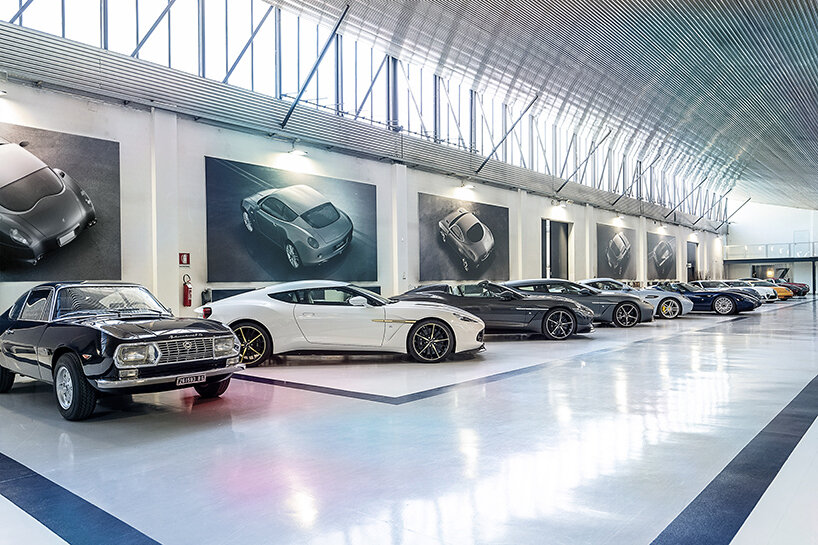 Zagato Atelier in Milan, images courtesy Zagato
Zagato Atelier in Milan, images courtesy Zagato
the future of rare, exclusive, and timeless design
As they look toward the future, Andrea and Marella Zagato continue to embrace their legacy while adapting to an evolving automotive landscape. In a world increasingly defined by digitalization and electric vehicles, the studio‘s focus on aesthetic purity and craftsmanship remains a point of distinction. ‘We work not for addition, but for subtraction,’ Andrea explains, emphasizing the timelessness of their design philosophy, rooted in simplicity and functionality. As the brand continues to evolve, its expansion promises to bring more collectors into the fold, deepening its connection to the art of coachbuilding.
In an interview with designboom, Andrea Zagato and Marella Rivolta Zagato discuss their approach to coachbuilding, the significance of preserving tradition in an evolving automotive industry, and their plans to expand the atelier’s presence to engage collectors on a more personal level.
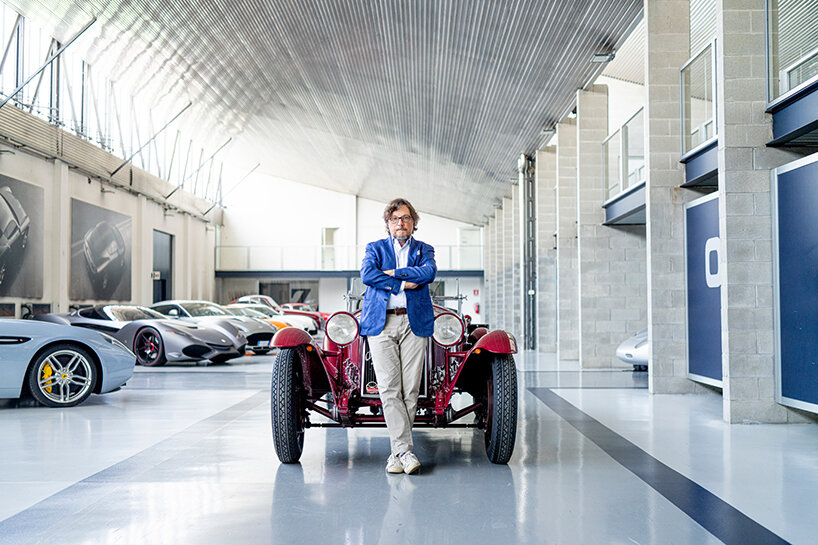 Andrea Zagato, grandson of Ugo Zagato, founder of Zagato
Andrea Zagato, grandson of Ugo Zagato, founder of Zagato
interview with marella rivolta zagato & Andrea zagato
designboom (DB): Might you begin by describing the origins of Zagato, and how it operates today?
Andrea Zagato (AZ): The key point is that we are not an automotive maker, we are a coachbuilder. We established the company in 1919, as a coachbuilding company for automobiles and airplanes. While automotive design is 120 years old, coachbuilding is, in Europe, a 500 year-old activity. It started with horse carriages. The difference between all the other coachbuilders is that Zagato started with airplanes, and we transferred the technology of the airplane into coachbuilding and cars. If you want to visualize our language, you have to blend a whole chariot — without the horse — and an airplane. It’s a unique reality in the coach building panorama.
Zagato is also different from other coachbuilders or car designers because in 105 years, we never build a larger series of cars, only custom-made, limited edition series. Our cars are items for collectors, rather than consumables. These are the three milestones about the history of the company: It’s a coachbuilding company, we uniquely mix the language of chariot building with airplanes, and we only concentrate on limited edition series which results in our cars becoming collectible items.
Marella Rivolta Zagato (MRZ): It’s a very old and specialized trade. We are like architects of the cars. We’re not car producers. We mostly look at the design, at the lines, at the setting. Many clients that love Zagato, the ones who know us more, they know this. But the ones who don’t know us say, ‘What is the engine? What is the car?‘ That’s the donor car. We are the ones who dress the cars. We are architects of cars, not car producers.
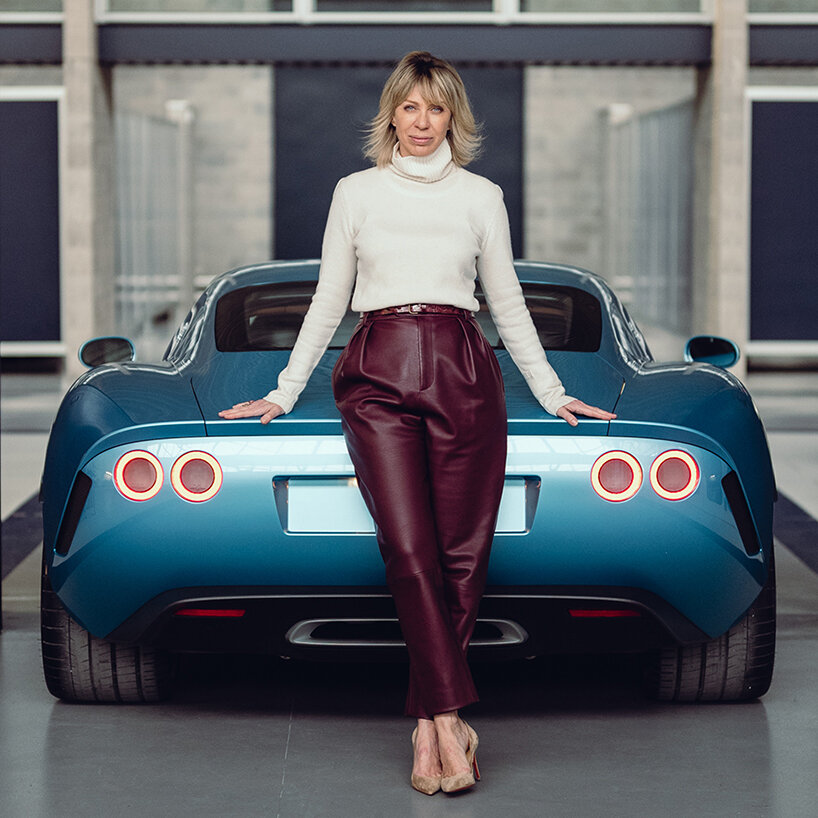 Marella Rivolta Zagato, granddaughter of ISO Rivolta founder Renzo Rivolta
Marella Rivolta Zagato, granddaughter of ISO Rivolta founder Renzo Rivolta
DB: What are the characteristics of a Zagato-designed vehicle?
AZ: The language of our design was always connected to its aeronautical origins. If you work on airplanes, you detach everything that is not necessary because the airplane has to fly. So you don’t add ornaments to an airplane, because this makes the airplane heavier. In design, this idea is called ‘functionalism,’ or ‘rationalism.’ We work not for addition, but for subtraction. We take away, rather than add. While most coachbuilders add elements to the design, we take off everything that is not necessary.
MRZ: Purity is most important. We try to enhance the volume of the product and try to make it as simple and functional as possible without ornaments. Then it lasts over time. There are some famous traits of Zagato, like the double bubbles on the roof, which are functional elements. For racing, cars are designed lower to make the air flow. These elements were born because the pilot has to fit inside with the helmet. But at the same time you don’t want to make the car too high or too bulky because it wouldn’t be as good in performance.
DB: So it’s a form to follow the function.
AZ: Exactly. In Milano we call it ‘essential beauty,’ bellezza necessaria. The idea also was supported by Enzo Ferrari. Ferrari was our best client in the first two decades. He said, ‘The car that wins the race is the most beautiful car.’ You lose the race, the car is not good looking. (laughing)
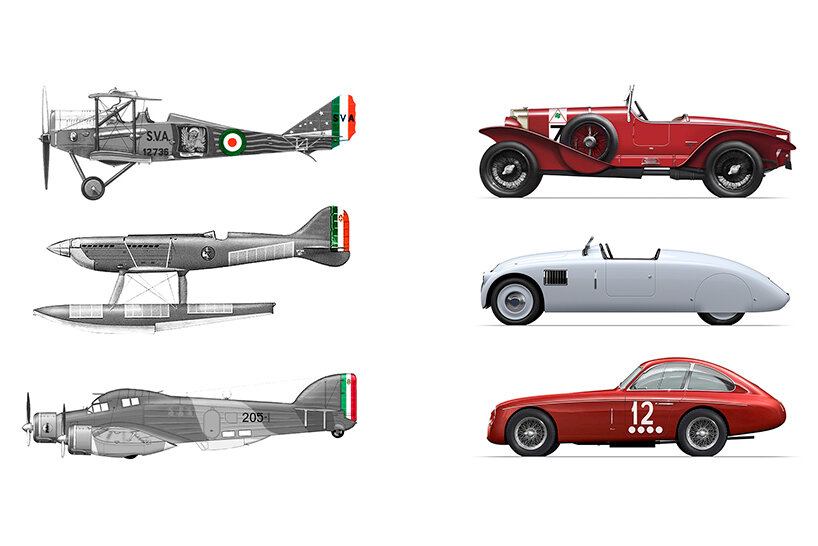 the coachbuilding company is informed by its aeronautical roots
the coachbuilding company is informed by its aeronautical roots
DB: Zagato is going to be expanding into the US and the UK. Could you speak about your goals of this expansion?
MRZ: Most of our greatest collectors are in the US. Our main markets have been, for the past hundred years, the US, Japan and the UK. These are very good markets, but because we are such a niche market, we are very limited. And in a way, we are still a family-run business. Andrea and I have always been a little bit ‘closed door.’ We don’t open our doors to the public. Now the objective with a new partner that is in the company as shareholders, we want to open a little bit more of our home, Casa Zagato, to a wider community. That’s why there is this project of the Domus, as we call it.
We sell works of art, unique pieces. So we don’t have dealers. We need the right person who tells a story. Because our cars are made of design, of ideas, of passion, and of a story. There is so much behind it, and we must be able to communicate that in order for people to really appreciate it. Today there are many beautiful things you look at. For example, with clothes, you might go in a store and only one thing might catch your eye — why? Maybe because of the quality of research on the materials or the details. It’s because of the idea and the purity, not because of the brand. The brand’s name could be almost nonexistent. We have a similar philosophy.
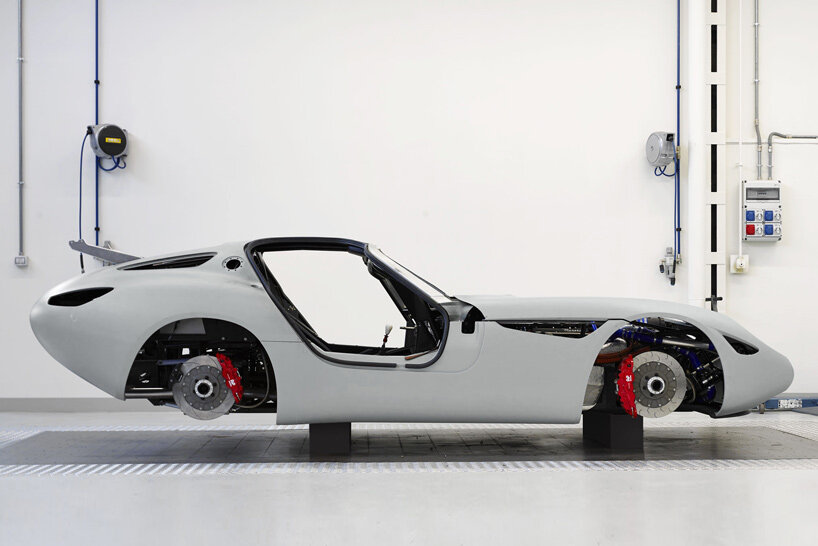
2015 Maserati Mostro Zagato (being built)
AZ: You could recognize the brand, but it’s not evident. The first thing we have done with Marella was to take off the name Zagato. Because we said, ‘You have to know us. If you don’t know us, you don’t deserve this.’
MZ: We did this twenty-five years ago. We said, ‘If you don’t know who Zagato is, then you’re not our type of client!‘ (both laughing)
AZ: It’s a bit snobbish, but it worked. Every client was telling friends about the experience of coming to an Italian atelier in Milan, and the friends are coming. Then we decided to open up our market a little bit to newcomers, and so to enlarge to the Domus portfolio. We’re choosing twenty Domus all over the world that will act as a gateway, a portal to enter our history and our products. We replicate a gateway, the entrance to the company, from Tokyo to Greenwich, London, and Toronto and so on.
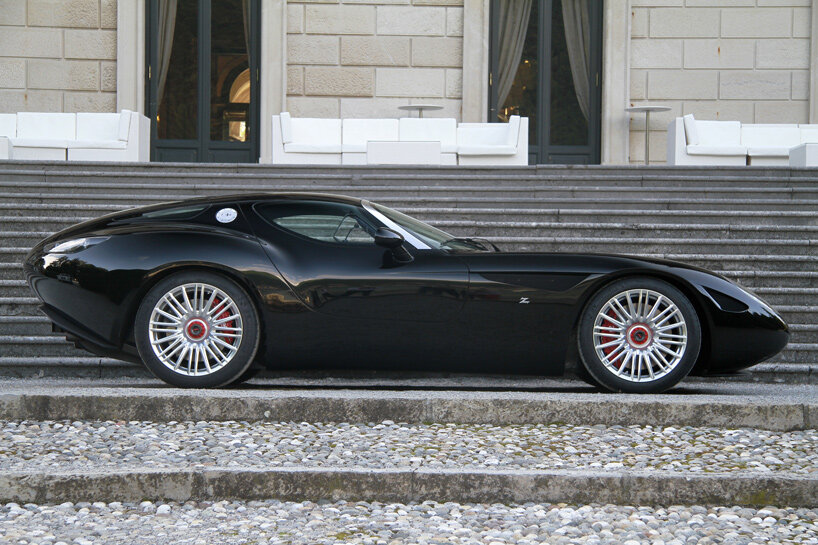
2015 Maserati Mostro Zagato (finished product)
DB: What is the meaning of Domus?
MRZ: It took us months to find the right word! It means portal — it’s a gateway to come into our world.
AZ: The Domus are based on luxury dealerships all over the world, but we have reversed the pyramid. Normally the manufacturer, with marketing, decides the product, then the product is pushed to the dealer who has to sell the product to the clients. Zagato was always a client-oriented company, not a marketing-oriented company. We have probably the best clients in the world — Enzo Ferrari, Lamborghini, and Maserati were all clients of ours. They, or the racing drivers, were suggesting the product to us, and we were making the product according to their suggestions.
We are trying to replicate this 105 year-old attitude by involving clients all over the world. The Domus will connect us with a group of clients, and they will be able to suggest our next type of project with which brand, and then we follow the suggestion. Practically, we reverse the pyramid with the bottom part, who’s suggesting, to the top. It is exactly the opposite of how the automotive industry works today.
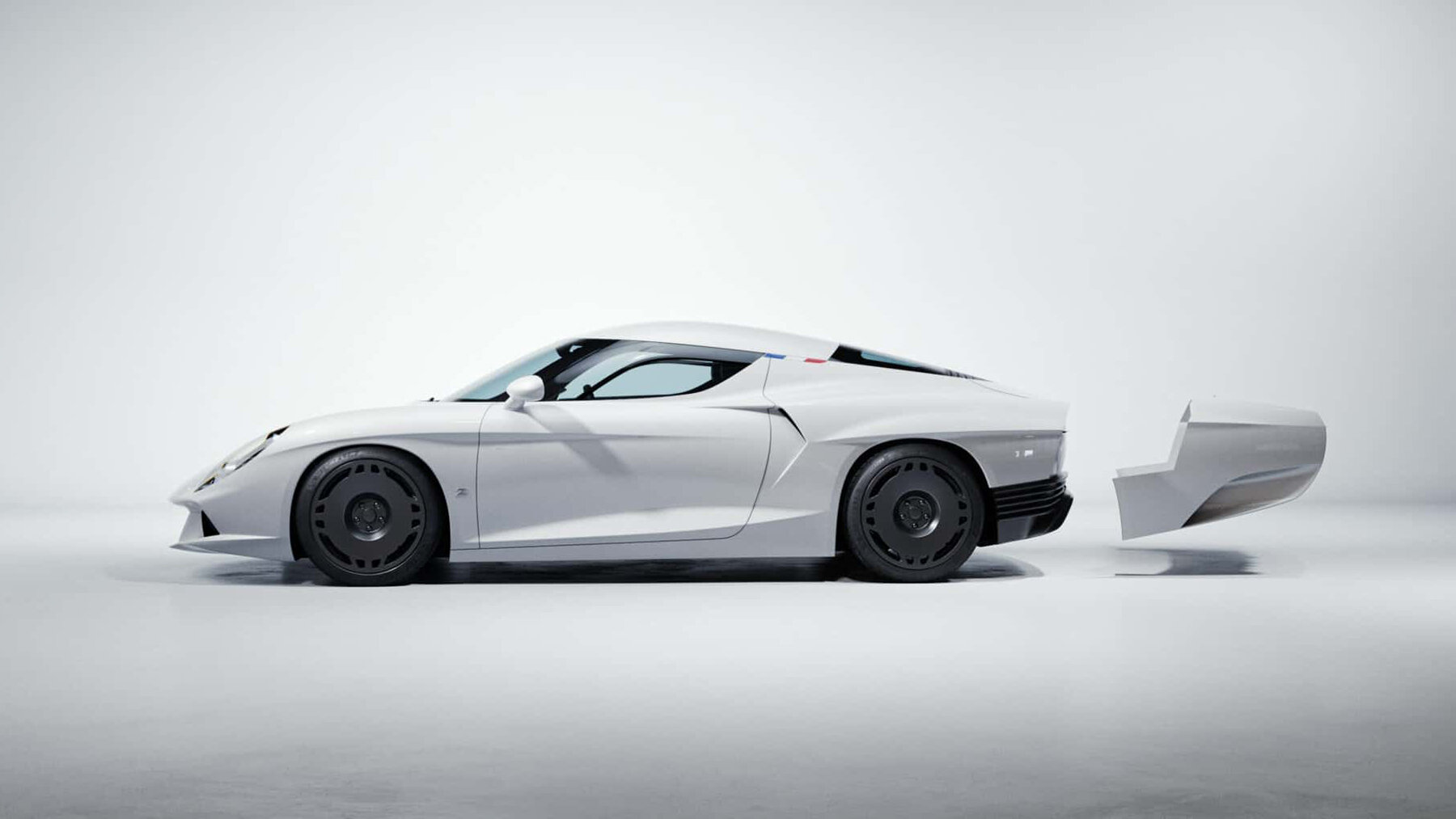
AGTZ Twin Tail
DB: The AGTZ Twin Tail was a recent project of yours. Could you give any insights into the design process behind this?
AZ: The design process comes from the idea of producing one car with two tails. As you can imagine, only a coachbuilder can imagine a car with two tails. You own practically two cars in one, because you have at your disposal the second tail which can be connected quickly to the car. It’s like adding a long skirt and a short skirt to the same dress. You can decide which skirt you’d like to wear, and in five minutes you can change yourself.
This is the major idea. No big company could think of something like that because for them, it’s too expensive, and they are looking for consumables, not collectibles. This car is driven by the idea of becoming immediately a collectible. We sold already 75% of the production, and the start of production will be next week. The media success was remarkable because nobody has ever seen a car with two tails, and a car with two tails is a car with two souls.
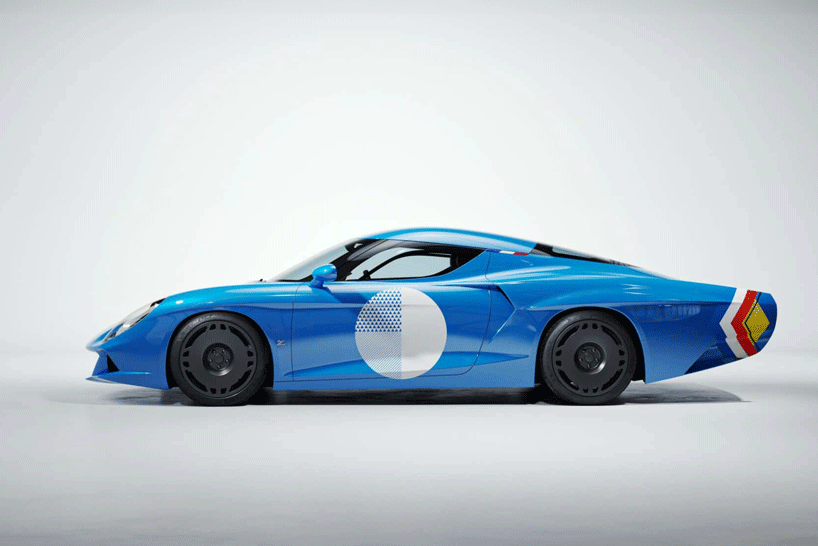
AGTZ Twin Tail
DB: The art of coachbuilding has evolved significantly over the years. Do you see Zagato’s design language evolving in this era of increasing digitalization and electric vehicles?
AZ: The world of cars is going in the direction of standardization of all components. This means that even if we don’t move to electric, if we stay with the endothermic engine, all endothermic engines are going to be standardized. A few big automotive groups now own many brands. For example, Stellantis owns Jeep, Chrysler, Alfa Romeo, Lancia, Fiat, Peugeot, Citroën, and so on. The idea is to have the same components on every car owned by that group. Because of this, every car will be mechanically similar.
Moving to electric, this is exaggerated because electric cars are made by one battery, one electric engine, and one inverter — every car will be exactly the same underneath. The main element of differentiation will be in what you see and what you touch, meaning the design. This means that we are probably entering a new era for coachbuilding, because then you choose the car for the aesthetics. There will be no front wheel drive, rear wheel drive, four wheel drive, twelve cylinder, six cylinder — it will be all the same. You will choose because of the design of the car.
This brings back the role of coachbuilding and car design. So whatever is the direction, endothermic engine or electric, for us, it’s an advantage. I tend to be optimistic always, but I’m optimistic about that because I think this analysis should be correct.
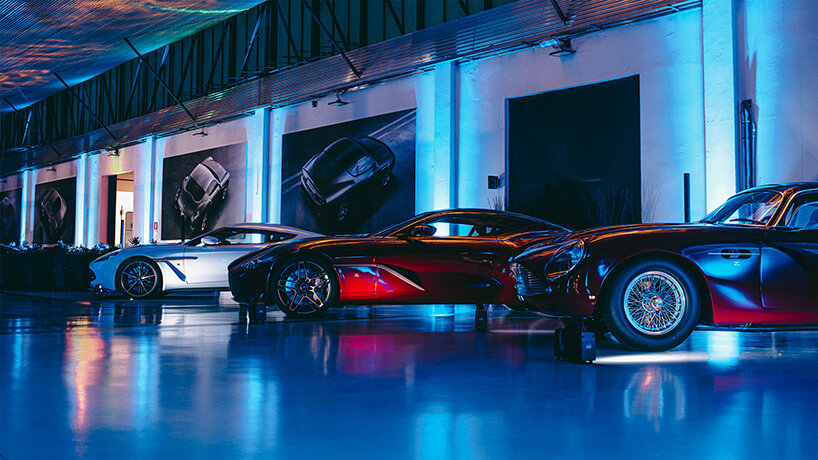 Zagato Atelier in Milan
Zagato Atelier in Milan
DB: Is there anything else that you and your team are optimistic about?
AZ: We are working to promote two nice stories between our company and two major brands. One is the story between my grandfather and Enzo Ferrari, and the second is the story between my father and Ferdinand Porsche. So by working on this story, which is about courage and vision, we are preparing a product that will be the result of the stories.
DB: What has been Marella’s biggest influence since the teams have united?
AZ: Good taste.
MRZ: Organization. I’m a problem solver. We are small, but sometimes we work with huge companies, like Aston Martin, and we have to be efficient and effective. Like most star directors, they are obsessed by perfection. Perfection does not exist, but I never give up. I always try to find the best solution. I brought organization and, as Andrea says, a little bit of taste. In the past, Zagato has always been disruptive in design. Now we are a little bit less disruptive, but in the past there have been some cars — for instance the Alfa Romeo SZ — where you either love it or you hate it. There is no in between.
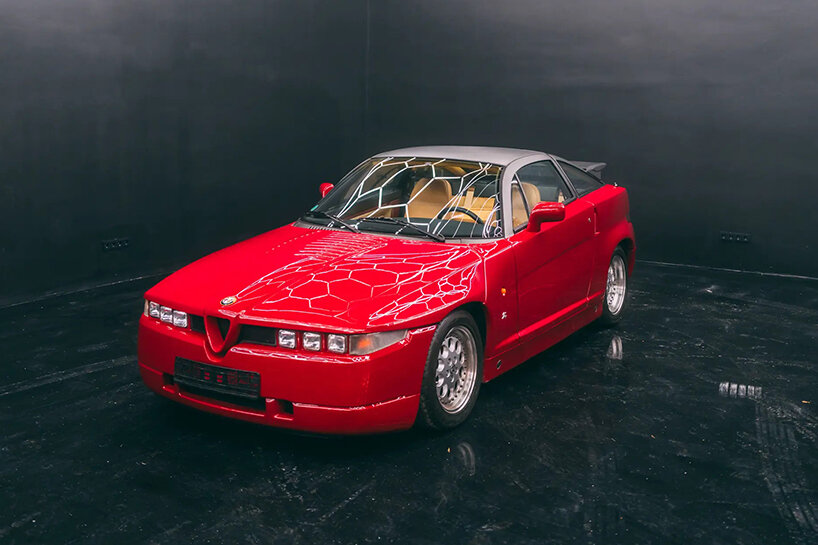 Alfa Romeo SZ, image courtesy RM Sotheby’s
Alfa Romeo SZ, image courtesy RM Sotheby’s
AZ: We were a little bit like Rolling Stones. Rolling Stones used to say, ‘You may hate us or love us, but for sure, you recognize our music.’
MRZ: I brought probably a little bit of taste. My family is Rivolta, and the cars of ISO Rivolta were very elegant. So I brought a little bit of that to Zagato.
DB: Can you explain what you mean when you say you were disruptive?
AZ: We never follow the trends. We always were consistent with the original idea of building an airplane on wheels, clean design, and long-term design. Throughout automotive history there have been many trends. We never applied the trend. We were always consistent with what we have done before. This brings us to the point that you recognize the car and you love it or you hate it.
MRZ: You have to be courageous. Because like in fashion, or other design disciplines, sometimes when you don’t follow the trends, people don’t understand it, or might not like it. Then they will appreciate it over time. It’s a more difficult road, but we’ve always done things that we liked and we feel close to us. Even if it was something that nobody was doing.
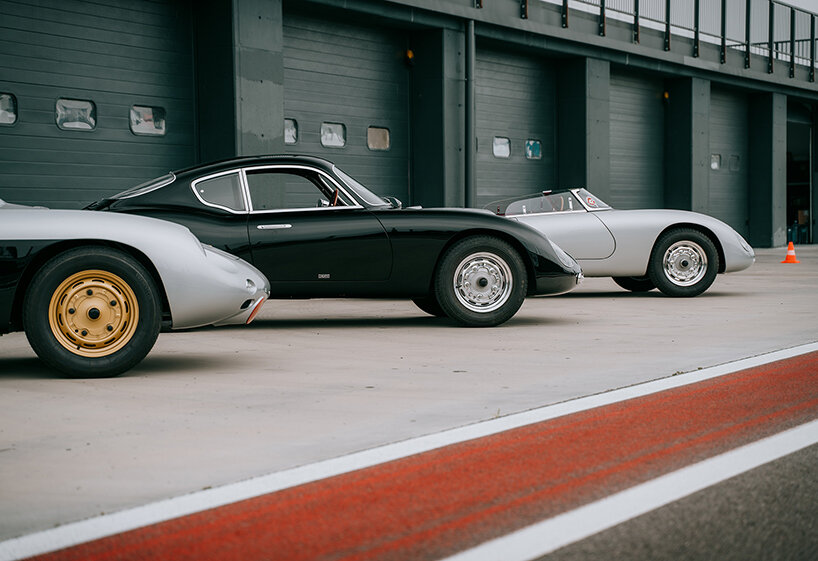 Zagato Porsche trilogy
Zagato Porsche trilogy
DB: It’s been said that Zagato is to automobiles what Andy Warhol is to art.
AZ: In that sense, yes. It’s highly collectible.
DB: You said earlier that you design the shell of the car, and you strip away the ornament. What is your approach to designing the interiors?
AZ: The approach to the interiors was always driven by the idea of lightness, comfort, and seats that allow you to drive to the limit without moving your body. We drove in Mille Miglia (an open-road, motorsport endurance race) with all the Zagato seats. We drove 1,600 kilometers without any back pain because the seats were ergonomic, simple, very light, and very well-designed. Today we add some, very few, ornamental elements because in luxury you need to do it. But we work on the interiors more like designers of sailing boats rather than motor boats. If you notice, sailing boats are always more tasteful than motor boats.
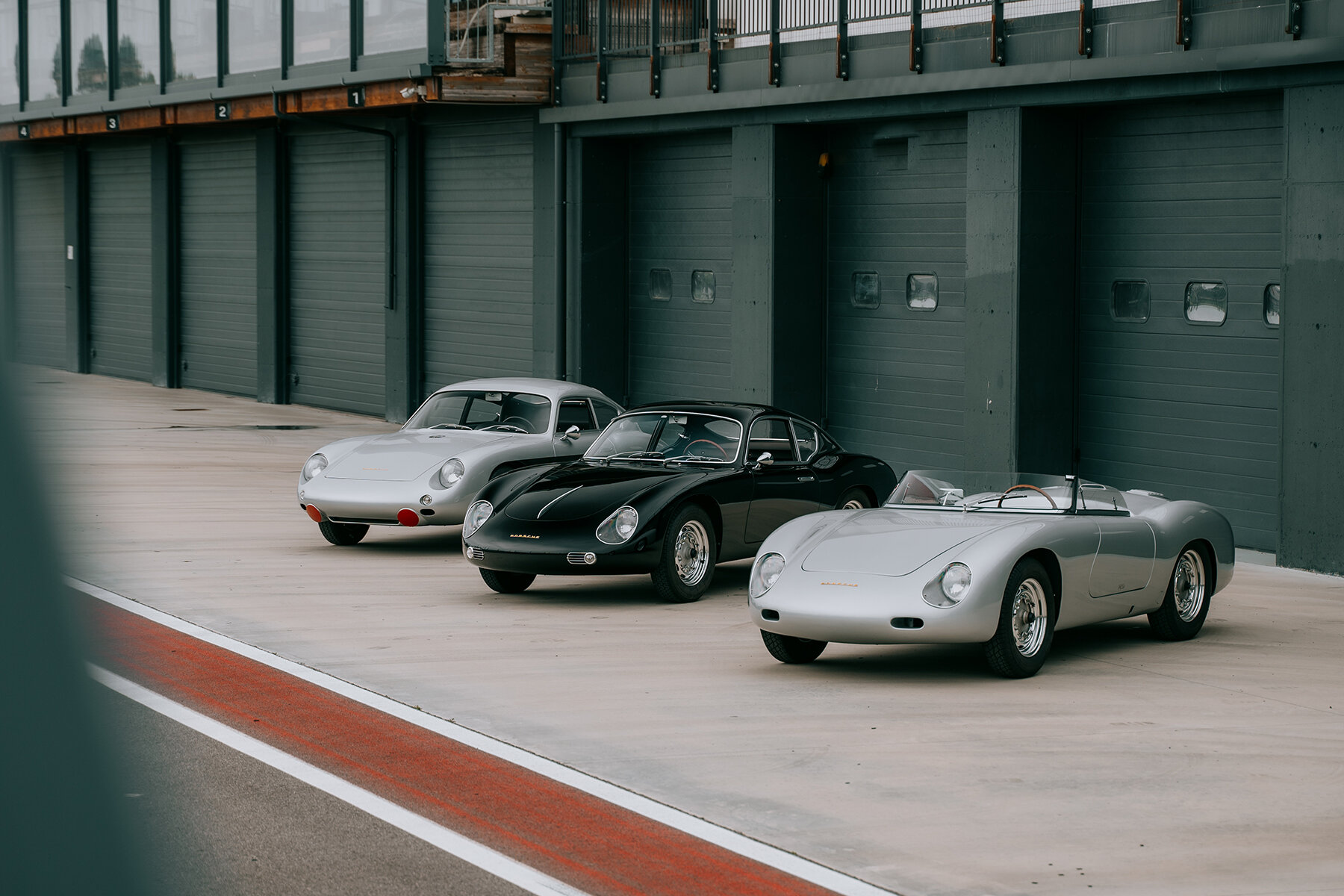
Zagato Porsche trilogy
project info:
studio: Zagato
